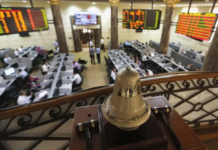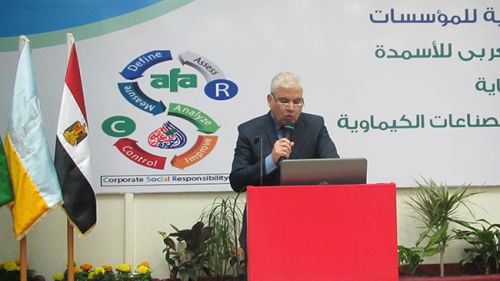A shift down in Egypt’s net public debt ratio to GDP. Egypt invests over $2.0 bn in US treasury bills, Hot money excluded from central bank’s announced reserves
The Egyptian Debt and Hot Money issues have been causing panic and alarm over the past weeks, this report produces a complete analysis of Egypt’s Debt domestic and Foreign, the hot money status in Egypt, Egypt’s new S&P ranking’s Report highlights and delivers a perspective based on facts on how Egypt is managing its debt towards the circle of safety, diminishing reasons for haphazard panic and an assurance that Egypt is heading in the right direction.
Bloomberg agency issued a report in May, stating that the Egyptian debt deserves to rise two degrees due to the high demand in the global debt market and lower risks with the success of the first phase of reforms. We have seen this clearly in the BNP Paribas report, who launches and markets Egyptian bonds in the international market, that yields on Egyptian bonds fell between 1 and 1.5 percent. (Bloomberg report link)
What does this decline mean?
The lower the yield on bonds, the lower the risk of the bondholder state. Accordingly, this increases the confidence of the financier or lender in the state’s ability to re-pay. Therefore, it was expected that the credit rating agencies would change Egypt’s outlook. Which was reflected through the latest report released by Standard and Poor’s (S&P) that upgraded Egypt’s rating from stable to positive for the first time in two years.
What is the Global Bond Market?
The global government bond market is approximately $38 trillion, if we add the private bonds, the total will grow about five times this figure. China holds about $9 trillion in government bonds.
Why has S&P upgraded its outlook for the Egyptian economy?
1- The continued rise in cash reserves
2- The higher than expected growth rate, the agency expected 3.5% but Egypt achieved 4.2% in the financial year 2016-2017.
3 – The Rise in Foreign direct investments.
S&P sees that Egypt has great chances to raise its rating in the coming reports, but how can we achieve this from the point of view of the agency?
1- Along the coming year the government needs to work on implementing the structural reforms that encourages and supports the investment climate and growth
2- Dropping Inflation to normal levels
3- Continuation of the liberalisation process of the exchange rate allowing price determination through the market’s supply and demand forces as it has done since 3 November 2016
4- The Government has implemented its promises to reduce the ratio of public debt to GDP
5 – The sustainability and improvement of the security situation and thus recovery of tourism and its revenues.
The Agency believes in the following facts:
1- Inflation is very high, but reached its peak and its elevation was expected to be temporary and not permanent.
2- Liberalisation of the exchange rate paved the way for raising the competitiveness of the Egyptian economy.
3- The new legislations will contribute to improving the business environment and attracting investments.
4- The reason for the improvement of the economy is the contribution of two sectors to growth: investment (mostly foreign direct investments – FDI) in addition to an increase in the volume of exports.
5- Despite the reforms, the ratio of debt to government revenues remains high, and the ratio of public debt to GDP will continue to be high for a period of time.
In acknowledgment to an earlier error in S&P’s forecast: Tacitly S&P recognised the mistake in its expectation of Egypt’s growth, where it expected in its previous report 3.8% during the current financial year 2017-2018, but Egypt achieved 4.4%.
Why have they changed their expectations and what sectors will increase the growth rate?
1- Success in attracting foreign direct and indirect investments
2- Success in restoring the remittances of Egyptians abroad through the banking system
3- Decrease of Egypt’s energy deficit and the potential for surplus due to the expected production of gas fields, especially “Zohr”
4- The Egyptian government’s extended investments on infrastructure establishing a network of roads under construction and established.
5- The new administrative capital and its impact on improving facilities and services in the country, while expanding the zone of urbanization.
6- The Suez Canal axis and the development of its economic zone which will have a positive impact on exports, industries development and technology transfer.
7- The Agency praised the new industrial licensing law, the new investment law and the natural gas law (liberalising the gas market).
8- S&P also praised the payment of dues to foreign partners and its positive impact on productivity, growth and credit rating.
9- The Agency presented some negatives in one line only within its 12 pages report confirming the rise in interest rates and inflation as well as the difficulties facing financial inclusion in Egypt.
What does S&P expect next year?
1- Egypt’s socio-political environment remains fragile due to unemployment and inflation, which always takes into account the potential for popular unrest. However, the agency takes into account the social protection programmes implemented by the state in parallel with the reforms and the importance of this in reducing the negative prospects. Accordingly Continued political stability in Egypt is essential to proceed with the reform successfully.
2- The Agency noted the continued improvement in the security situation in North Sinai, despite their follow-up to some terrorist incidents. They stressed that any decline in security will have a negative impact on tourism and investment.
3- The current account deficit to fall from 6.6% of current GDP to 4.1% in 2020.
4- Unemployment to drop to 11% in the next financial year instead of 11.9% currently.
5- Reserves rise to $39 billion over the current figure of $36 billion.
6- The US dollar exchange rate is expected to rise to EGP19.5, EGP 21 and EGP 21.5 in 2018, 2019 and 2020, respectively.
This is not entirely negative for three reasons:
First, the dollar in South Africa equals 14.4 Rand, in Nigeria, it equals 360 Naira, in Morocco it equals 9.3 Dirham, in China it equals 6.6 Yuan and in Japan it is 112 Yen. On the contrary; We find that each KD1 equals $3.3, also every 1BD equals $2.6. The Kuwaiti and Bahraini currencies are stronger than their counterparts against the USD, but does this mean that the Kuwaiti and Bahraini economies, which equate to less than 10% of the New York state’s economy, are stronger than the US economy!!! Of course not. Thus, we are faced with exchange rate models from emerging and advanced economies that prove to us that the exchange rate does not fully reflect the strength of the economy and can not be taken as a criteria for growth or contraction.
Second, the weakness of the currency is beneficial to the economy; tourism, export and investment sectors. As we have seen after a year of launching reform, the three sectors witnessed growth rates of 55%, 12% and 26% respectively in terms of tourism revenues, export volume and investment attractiveness.
Third: A weak currency adversely affects import sectors and the cost of debt, as Egypt is an importing country for most of its strategic and basic needs and has a deficit in its trade balance, yet the deficit fell by about half over a year after the liberalisation of the exchange rate. However, there is still a clear deficit in Egypt’s foreign trade. Thus, the devaluation of the Egyptian pound against the US dollar increases the cost of imports, causing commodity prices to rise. Accordingly an increase of one pound in exchange rate between the currencies is worth 12 billion pounds increase in the cost of importing food supplies, the same one pound increase is worth a 3 billion pounds increase in the cost of importing petroleum products. Accordingly, the effects are balanced between the pros and cons of the weakness of the local currency.















